Pregnancy is the most important, bright and responsible period in the life of any woman. With each month it becomes more and more difficult to cope with the load on the spine, lower back and legs, and choosing more comfortable positions for rest is not always able to reduce tension and relieve pain in the body. In this case, doctors recommend using a special pillow for pregnant women.
It is not necessary to buy it in a store, it is enough to devote some free time to handicrafts, and make it yourself, for yourself. How to sew a pillow for pregnant women and what are the basic requirements for its cutting, choice of fabric and stuffing, is described below.
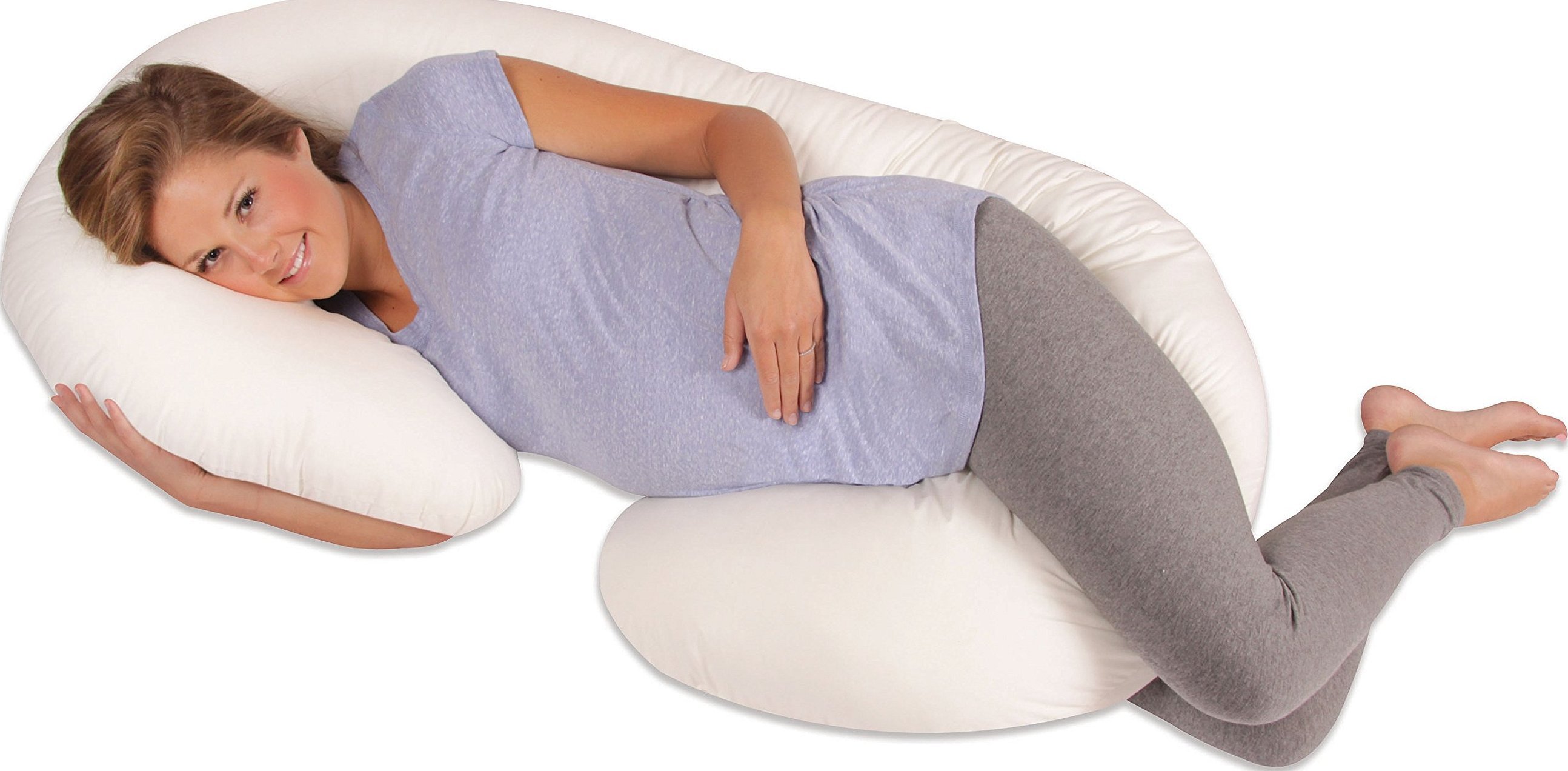
Purpose
A pregnancy pillow is not just a whim for pregnant women, but an indispensable item that accompanies them throughout the entire period.
The pillow is needed:
- To find a more comfortable position while resting, reading books, eating or sleeping;
- Reduce the load on the female body. This is especially necessary starting from the second trimester, when the tummy begins to round out and interfere with sleeping in a position that is comfortable for many.
- A specially sewn pillow will help get rid of discomfort if you put it under your tummy. This cannot be achieved with simple pillow models;
- After giving birth, the pillow will be useful not only for the nursing mother, but also for the baby. You can make a "nest" out of it and put the baby there so that it does not roll away.

To achieve the desired effect from using the pillow, you should follow some recommendations:
- To reduce discomfort in the shoulder area and reduce the load on the neck during sleep, you should place a special support roller under your head, which is most often included with many models of these pillows.
- To reduce the load on the abdominal muscles and ensure comfortable rest in the last months of pregnancy, you should put a support lateral bolster when sleeping on your side. After all, even the simplest position without a pillow is absolutely uncomfortable when you have a bigger belly.
Important! Neglecting this advice can threaten the expectant mother with prolonged back and lower back pain.
- With the help of a bolster pillow, you can reduce the load on your joints and stimulate blood circulation, reducing swelling in your legs. To do this, you should put the pillow between your legs while you sleep or put it under your calves so that your legs are slightly higher than your head while you rest.
- The side bolster can be placed under the back, reducing pressure on the spine and preventing the young mother from rolling completely onto her back during a night's rest. This will prevent additional strain on the internal organs.
Selection of materials
When choosing materials for such a pillow, you should approach it more responsibly.
Textile
For this pillow, it is best to use high-quality and natural fabrics. The most important requirement is that the selected material is hypoallergenic. Ideal options for sewing will be: cotton fabrics, linen and calico. Two-layer pillows, a base and a pillowcase are also welcome. The base (cover with filler) is sewn from calico or satin. The pillowcase can be sewn at your discretion from the fabric that you like the most. Several factors must be taken into account:
- The pillowcase should be made of thick fabric;
- Pleasant to the touch;
- Easy to wash;
- Made from natural fabrics;

The following fabrics are often used for such pillowcases: linen, cotton, velour, knitted, fleece or plush. A wonderful pillow can be obtained if you use a fur pillowcase.
Knitwear and cotton are materials that are distinguished by their versatility and a rich selection of bright colors that can be chosen to suit your mood.
Linen is perfect for use in the summer.
Velour fits perfectly into home interiors thanks to its color and texture solutions.
Additional information! If the pillow will be used after the baby is born, it is worth sewing several different pillowcases, as they will need to be washed daily.
Filler
The filler is an important element when creating a pillow with your own hands, it must meet a large number of requirements: keep its shape and preserve it during and after use, be hypoallergenic, soft, suitable in terms of rigidity, elasticity and softness. All this affects the comfort of the pillow.
Let's look at the most common fillers and compare their pros and cons.
Natural fillers
Natural fillers include:
- Wool
- Natural fluff;
- Buckwheat husk.
Behind all the naturalness and safety there are quite a few disadvantages. Buckwheat is often infested with various insects and cannot be washed, down and feathers often cause allergic reactions, and wool clumps into lumps and becomes unsuitable for use.
Important! Even if the manufacturer indicates on its products that the filler is not damaged by mites, then it is worth thinking about its naturalness. At the very least, the material was treated with chemical compounds that can enter the body of the expectant mother during use and cause allergies, headaches or poisoning.
Artificial fillers
In the modern world, technology has reached the point of creating artificial, but safer materials for use in everyday life, including pillow fillings:
- Hollowfiber
- Polystyrene foam
- Sintepuh

Hollowfiber. Its main advantages are hypoallergenicity, durability, affordable price, mites do not start in it, mold does not form, a special advantage is that it does not absorb odors. It is not picky about washing, holds its shape perfectly, springs well and holds the body.
Cons: not very elastic, but this may only be inconvenient when feeding the baby.

Polystyrene foam. The advantages of this filler are its lightness and elasticity, it holds its shape well and does not sag, like holofiber it is hypoallergenic, does not absorb odors, does not create the necessary conditions for the development of mites and mold.
Cons: washing is possible, but not recommended, when moving a pillow with this filler and using it, a rustling sound is heard, it is not suitable for women with light sleep. Over time, the polystyrene foam balls lose their volume by 20%.
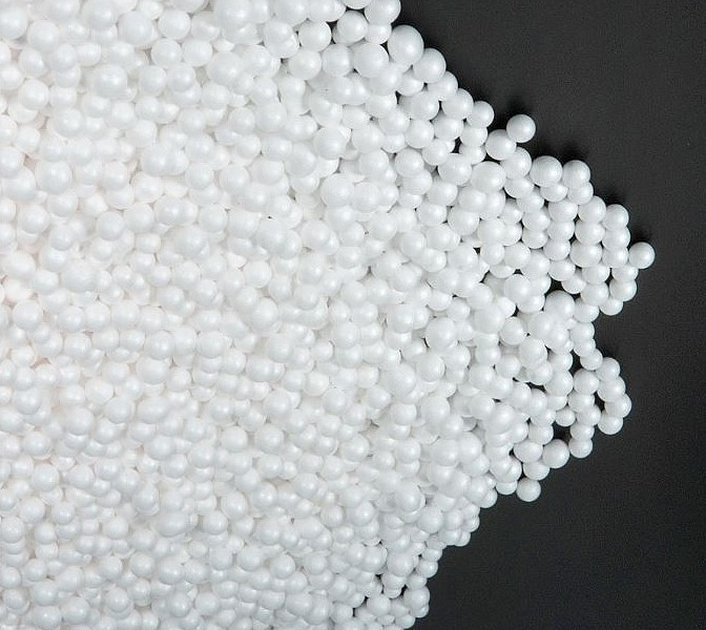
Sintepuh. All the pros and cons are absolutely similar to the holofiber filler, only it has a different appearance.
Additional materials
To start sewing, you need to prepare the following:
- Pencil and paper;
- Scissors and threads;
- Pins, awl;
- Tailor's chalk;
- Measuring tape;
- Sewing machine;
- Lightning;
- Fabric and filling.
Pattern and shapes of a pillow for pregnant women
Before you start sewing, you should decide on the shape and choose the one that is suitable for use.
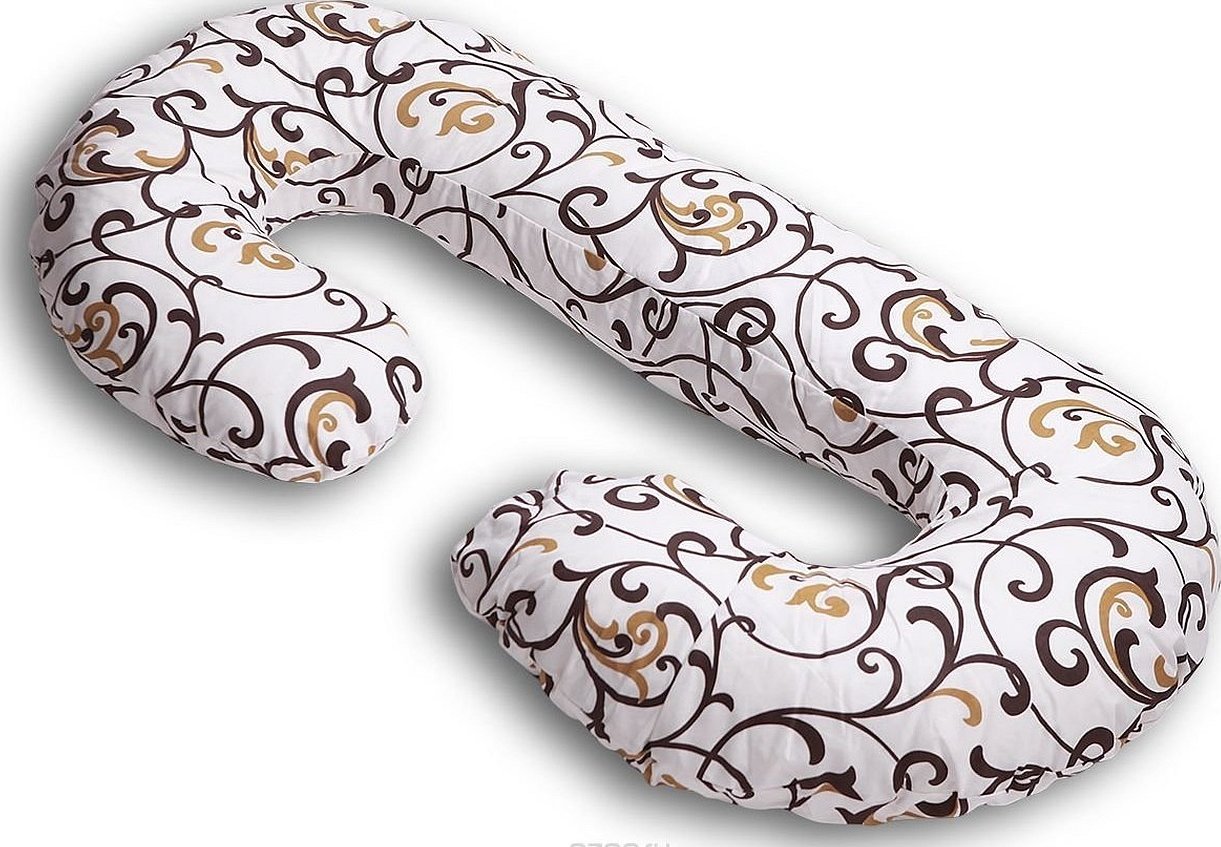
Croissant or C-shaped pillow
This type of pillow comes in both small (from head to waist) and large sizes (from head to toe). It can be used not only during night rest, but also during daytime reading or watching TV.

Pros: compact storage; wide range of applications; support from all sides; fits even on a small bed; easy to sew yourself.
Cons: When you roll over in your sleep, you also need to turn the pillow over, since the support from under your back disappears, and your stomach, on the contrary, rests against an obstacle.
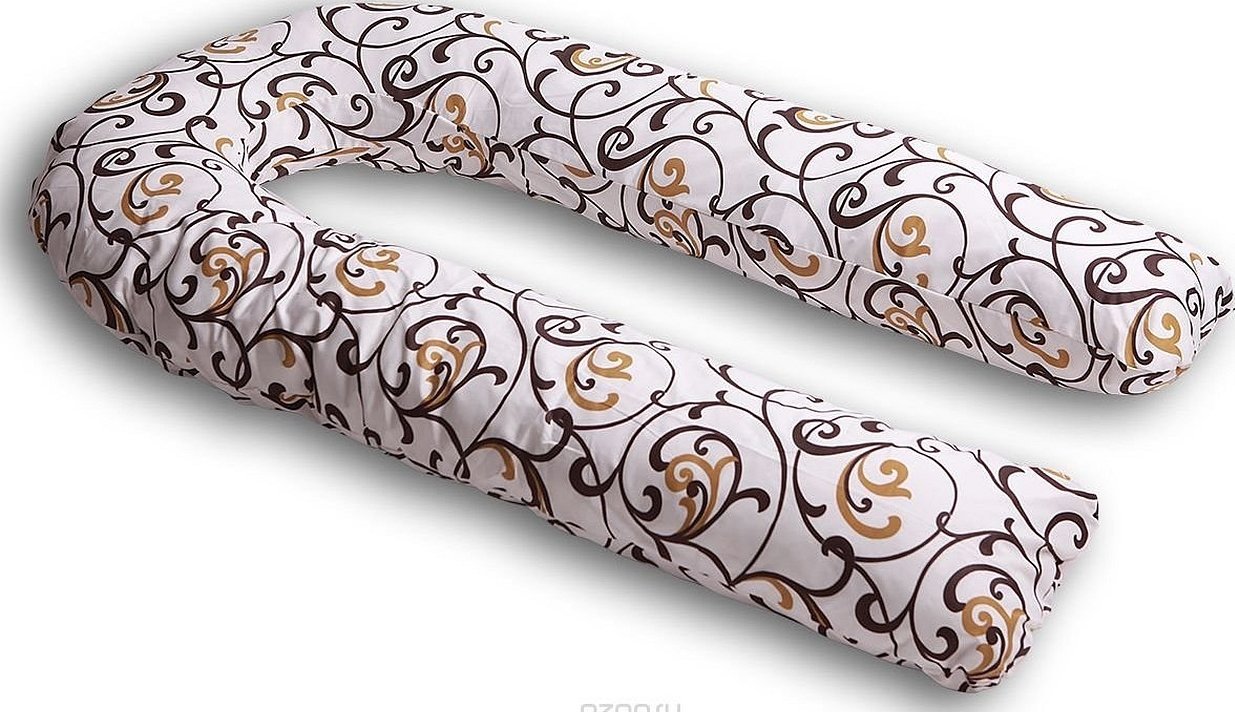
U-shaped or horseshoe-shaped
This shape is the most common and universal among pillows for pregnant women. "Horseshoe" creates a comfortable position, supporting from all sides, which allows you to rest more soundly and calmly.
Pros: body support from all sides; ideal shape to cover yourself with a blanket and find yourself in a closed cocoon; no need to turn the pillow over in your sleep; suitable for any kind of rest; the pattern adapts to the height of any woman.
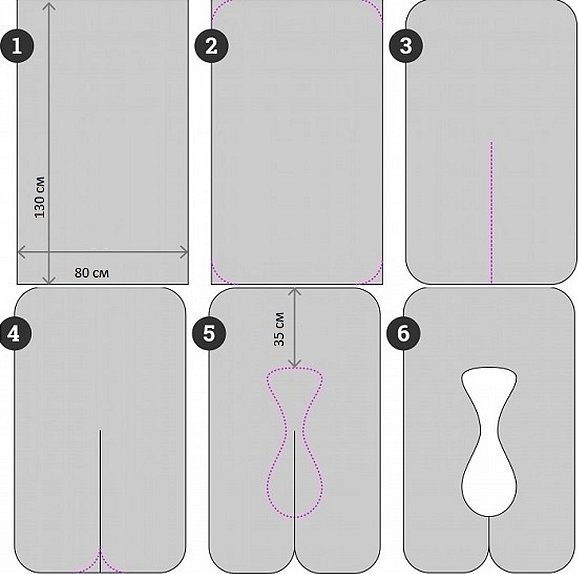
Cons: very bulky; not suitable for small beds; will not allow you to reach your loved one to hug.
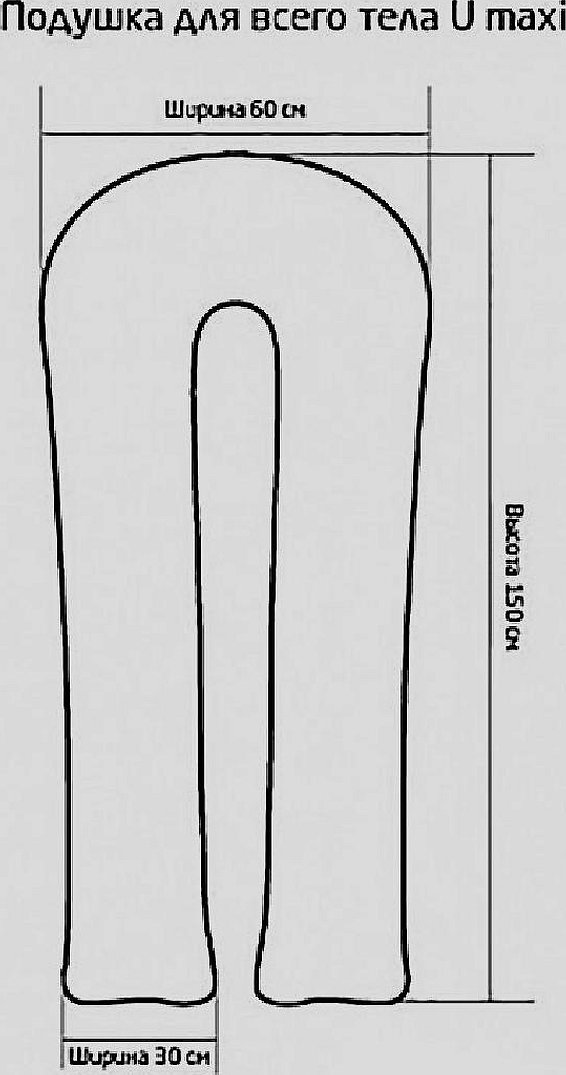
G-shaped
The pillow size is 350×35, this model has just recently appeared on sale and has quickly gained popularity among young mothers:
Pros: perfectly relieves muscle tension; like previous models, provides good back support.
Cons: The tail of the G pillow can get in the way during sleep and create discomfort.

"Banana" or boomerang
The model resembles a banana and varies between the shapes of a roller and a "croissant", the approximate shapes are from 160 to 190 cm, there are also very small sizes.
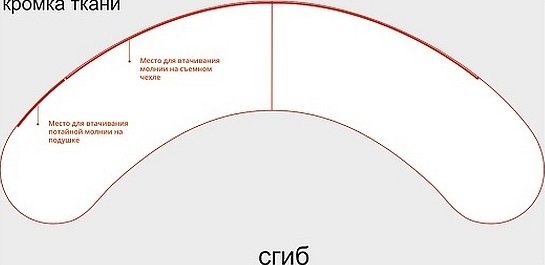
Pros: bends easily and adapts to any shape; compact; provides good support for the stomach and back;
Cons: none.
The picture shows options for its use.
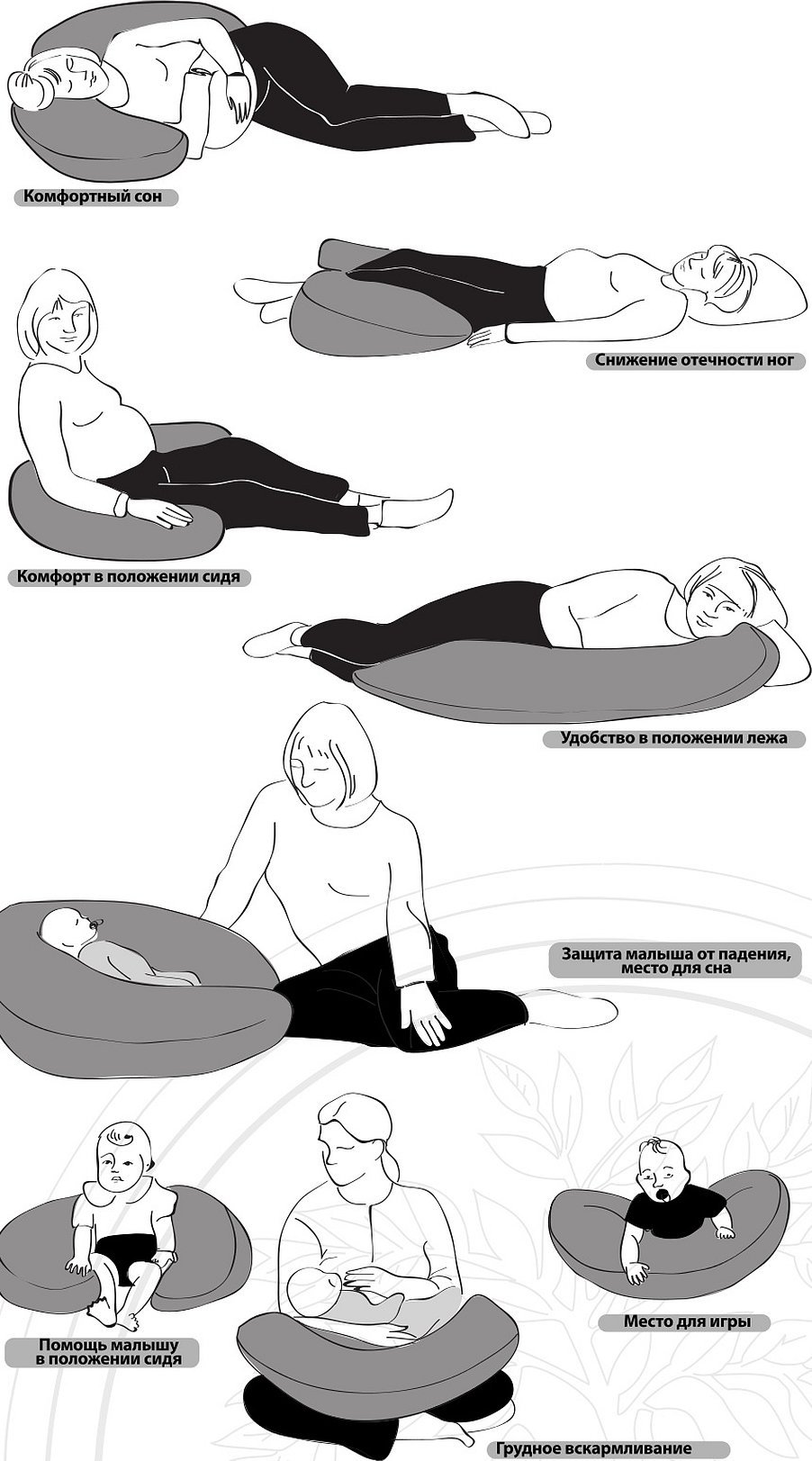
L-shaped
This model is 230 cm long and looks like a long cushion, the upper part of which is bent specifically for the head.
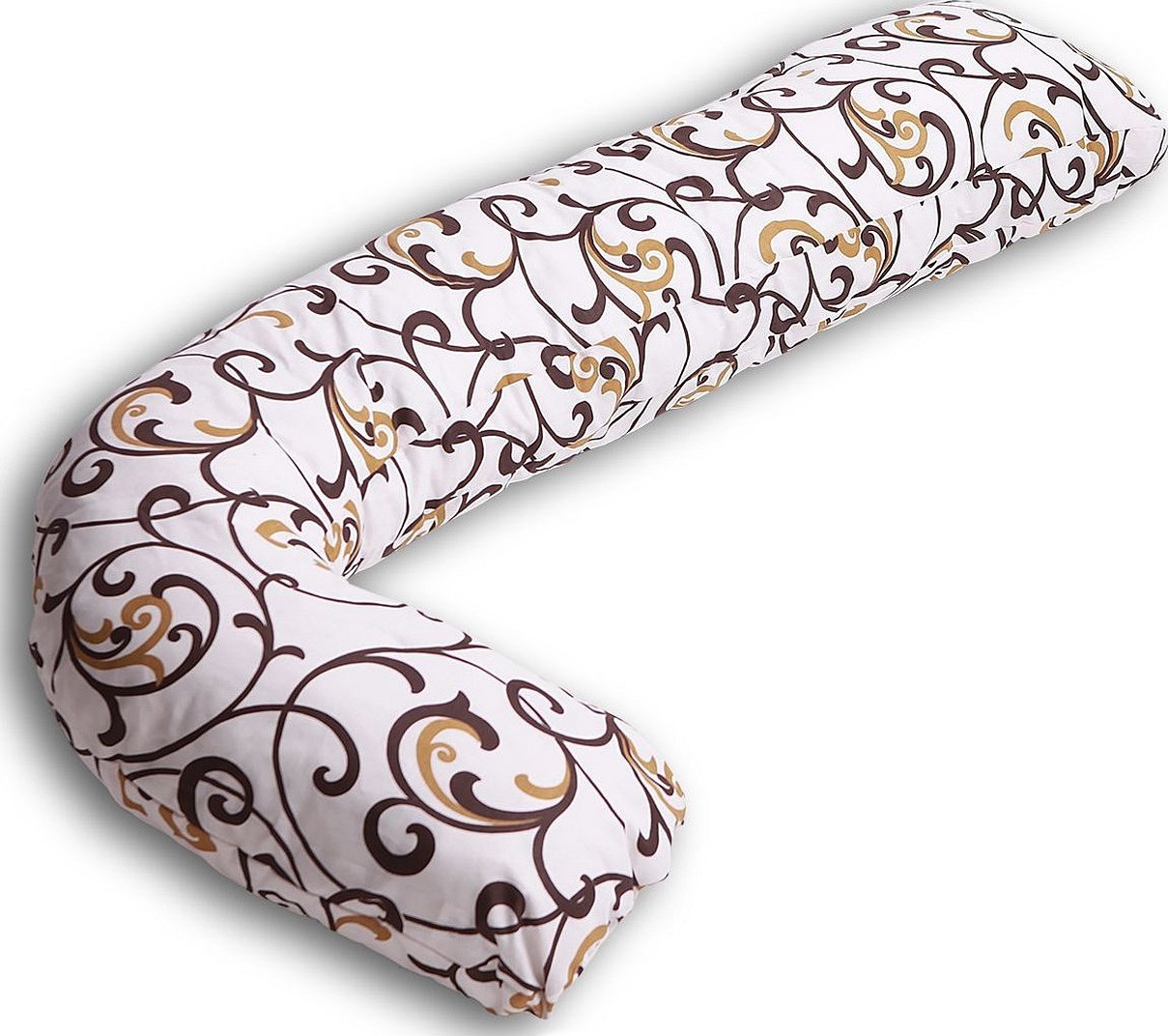
Pros: convenient and takes up little space.
Cons: due to the shape, the pillow will also have to be repositioned when turned over
Roller or I-shape
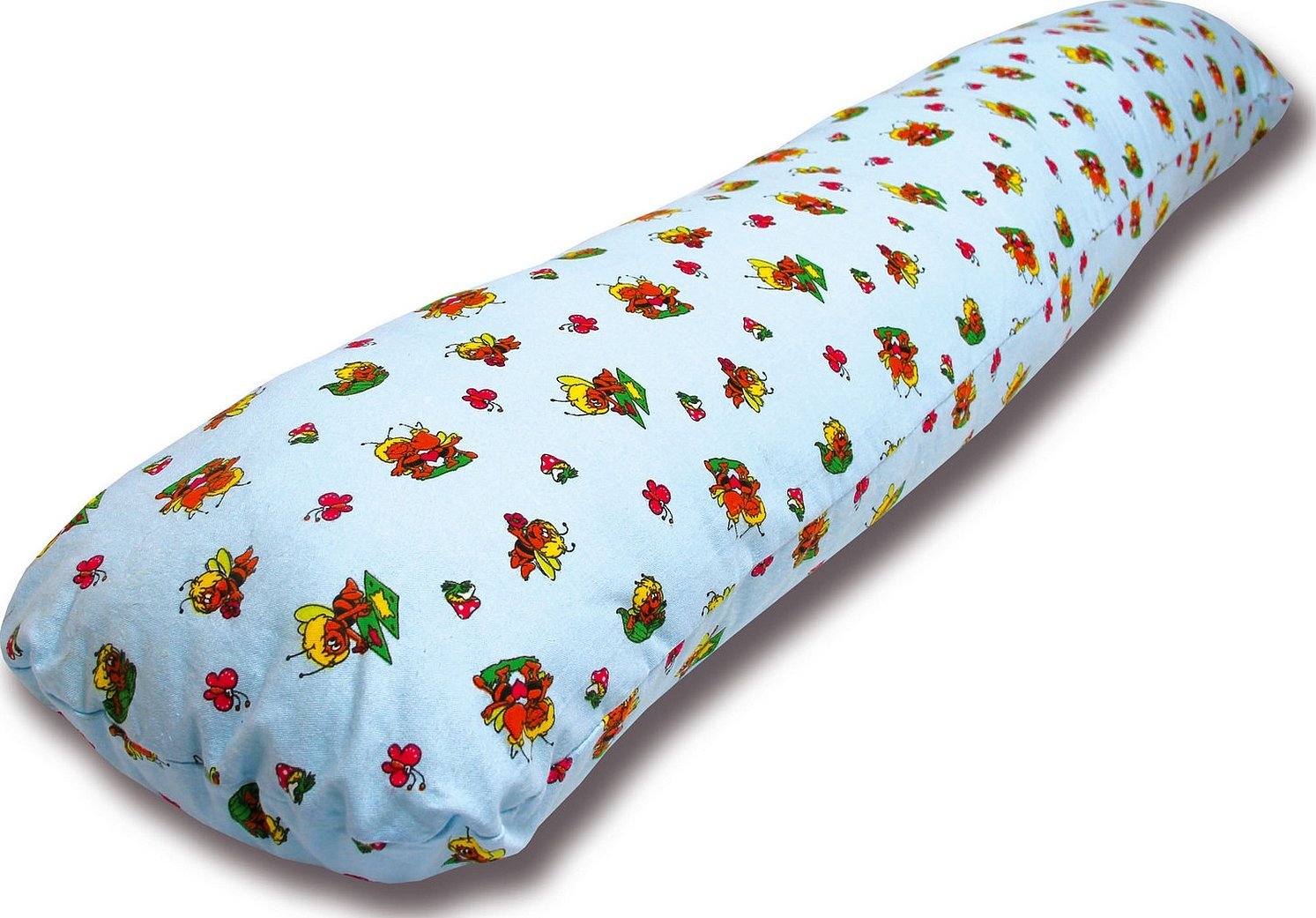
It is a large long cushion that can be hugged from the front or placed under the back. A budget option and very comfortable.

Pros: very compact; relieves stress on neck and spine muscles; minimal investment in fabric and filling when sewing yourself.
Minus: you will have to additionally use a pillow under your head.
Transforming pillow
This model can replace all the previous ones, but it is very difficult for an inexperienced person to sew such a pillow, a large amount of fabric and stuffing will be required. But the efforts will be rewarded with the result. The pillow consists of a C-shaped cushion and two small bolsters.
Pros: universality of use; contains all the advantages of previous models.
Cons: Fasteners or seams may cause some discomfort.
Step by step instructions
Having decided on the shape and collected all the necessary materials, you can start cutting and sewing. The principle of working with each pillow is almost the same, so the sewing master class is equally suitable for any model.
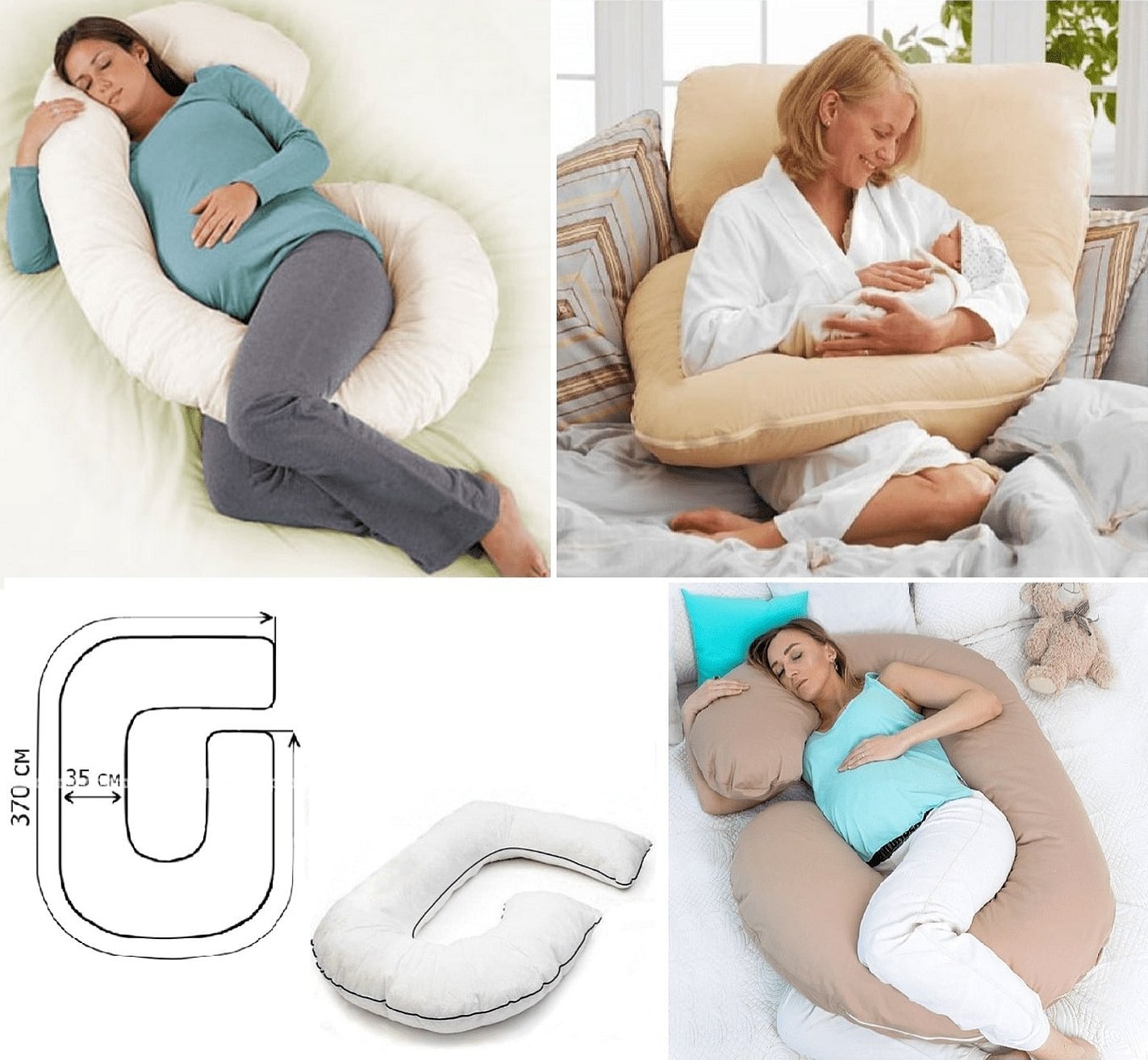
- The pattern should be transferred to a large sheet of paper, you can attach a template or draw it by hand. Examples of patterns are presented above.
- Fold the fabric in half with the right side facing inward. The fabric should be slightly larger than the pattern itself, literally 2-3 cm.
- The pattern needs to be secured to the fabric with tailor's pins and cut out, leaving literally 1-2 cm from the edge.
- The resulting parts (2 pieces) are the components of the future pillow cover.
- Place the two pieces together, right sides together, and pin them together to prevent the fabric from coming apart.
- Sew along the edge of the cover, leaving a small part for turning.
- The stitching should be done carefully, and then the edges should be processed with an overlock.
- Then turn the cover inside out, stuff it with the chosen filling and sew it up with an internal seam.
Important! When filling the pillow with stuffing, constantly check that it is not too soft or too elastic.
Pillowcases are made on the same principle. It is better to make several for replacement.
During maternity leave, a pillow is the most indispensable attribute that allows any expectant mother to brighten up her vacation. It also has high functional properties that can be useful after the birth of the baby.




